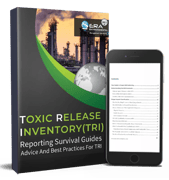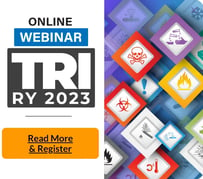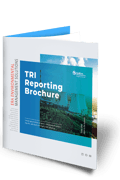TRI Checklist
ERA has developed this checklist to assist the EHS and safety managers who devote countless hours to the complex task of reporting to the Toxics Release Inventory (TRI).
Fill out the form to the right and receive an interactive PDF copy in your inbox.
Request your free PDF copy of our RY 2024 TRI Checklist
Reporting Criteria
- Confirm that your facility’s NAICS code is required to report -OR-
- You are a federal facility which must report regardless of SIC or NAICS codes -AND-
- That your facility employs the equivalent of 10+ full-time employees (20,000+ work hours) -AND-
- Your facility manufactures, imports, processes, or otherwise uses TRI-covered chemicals above their reporting thresholds
TRI Chemical Compilation
- Account for ALL chemical sources, including contractor chemicals, maintenance repairs, and other one-off activities in your list of TRI reportable chemicals
- Count TRI chemicals that are repackaged for subsequent commercial distribution (including sent for recycling) as a processing activity
- DO NOT overlook coincidental manufacture, which is a production of an EPCRA Section 313 chemical (e.g.: by-product or impurity) as a result of the manufacture, processing, or otherwise use or disposal of another chemical or mixture of chemicals
Chemical List Changes
- Report the SEVEN per- and polyfluoroalkyl substances (PFAS) added to the RY 2024 TRI list of reportable chemicals
- Bear in mind the updated De minimis levels of 0.1% for two new carcinogenic chemical compounds (cobalt and antimony) identified by the International Agency for Research on Cancer
- Report chemicals in the new diisononyl phthalate (DINP) category (N125) when they are manufactured or processed above 25,000 pounds or otherwise used above 10,000 pounds
- Account for the removal of the de minimis exemption for PFAS, which are now designated as "chemicals of special concern"
- Review TRI regulatory publications for industry-specific updates or changes
Toxic Chemical Activity Thresholds
- Identify all categories of chemical use and include all chemicals rather than only those whose thresholds are exceeded
- Evaluate threshold quantities as the total amount of chemicals manufactured, processed, or otherwise used, NOT the amount of TRI chemical released or managed as waste
- Apply the sum of chemical/compound to each activity threshold, including all facility threshold activities. Be aware that some discrete amounts of a TRI chemical can go through more than one threshold activity, and must be counted towards each threshold activity
-
Account for the lower thresholds of the 22 chemicals/compounds designated as persistent, bio-accumulative, and toxic (PBT) chemicals
- Count original chemical amounts used in threshold activity ONLY ONCE per reporting year to avoid over-reporting
- Count chemicals sent off-site and returned towards activity thresholds, as these are considered new materials
- Account for the exact fate of each of your chemicals after POTW treatment. In the event that the information is unavailable, you are required to use the default POTW distribution percentages
Chemical and Release Calculations
- Make sure that your chemical data sources adequately cover non-exempted composition thresholds
- Confirm Basis of Estimate Codes are accurate
- Factor waste treatment and disposal method release pathways
- REMEMBER: Threshold calculations are based on the sum of the chemical (or chemical compounds in a category) under each of the activities manufactured, processed, or otherwise used throughout the reporting year
Reporting Exemptions
- Apply De minimis exemptions to non-PBT and non-PFAS TRI chemicals in a mixture or product
- DO NOT apply De minimis exemptions to the manufacturing of chemicals OR as manufacturing by-products OR as wastes
- DO NOT apply article exemptions to TRI chemical releases during their normal use
- DO NOT apply article exemptions to actual manufacturing of articles
- DO NOT apply Laboratory Activity Exemptions to cases where TRI chemicals are used in specialty chemical production, pilot scale plant operations, non-laboratory set activities, or support services
- DO NOT apply the Motor Vehicle Maintenance Exemption to TRI chemicals released through fuel combustion, as this is an Otherwise Use Exemption
Validation, Recordkeeping, and Documentation
- Validate that TRI reporting is consistent with other relevant regulatory compliance and permitting requirements (i.e. NEI, RCRA, etc.)
- Reconcile emission inventory data with TRI data. (Check out our blog on using NEI data to catch TRI red flags).
- Account for and safely archive historic reports, documents, and records that may be necessary for amending TRI reports or environmental audits
Form Submission
- Don’t forget about the rule introduced in RY 2023 on reporting a foreign parent company if applicable
- Confirm Form A eligibility criteria is met when/if applicable
- Complete a Form R (or Form A, if eligibility criteria is met) for each chemical exceeding the reporting threshold
- NOTE: Hard-copy filing is ONLY accepted for trade-secret reporting
Central Data Exchange and TRI-Meweb
- Confirm that your company has a Central Data Exchange (CDX) account
- Confirm that BOTH the Preparer and Certifier have appropriate access to TRI-MEweb
Need More TRI Resources? We've Got You Covered.

TRI Survival Guide
How to avoid common reporting errors, ways you may be over/under-reporting certain chemicals, the best inventory tracking methods... this guide has it all.

TRI Webinar RY 2024
Join ERA's team of environmental regulatory experts for an A to Z of TRI reporting obligations for 2024.
Thursday, April 10th, 9:30 AM EDT

TRI Software Brochure
Using an exact virtual model of your process and materials, our software calculates your emissions and generates accurate reports based on your facilities’ day-to-day activities.
©2026 ERA Environmental, Inc. All rights reserved. Privacy Policy